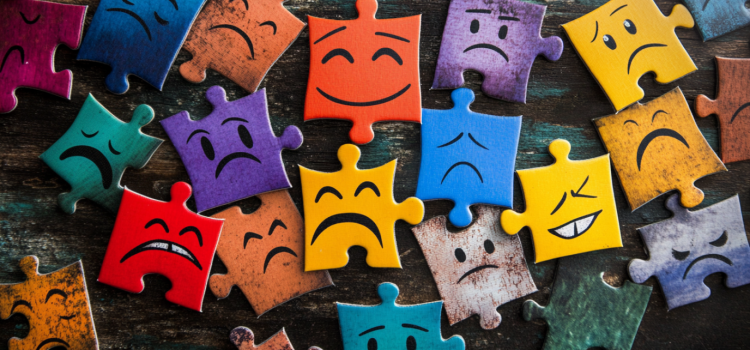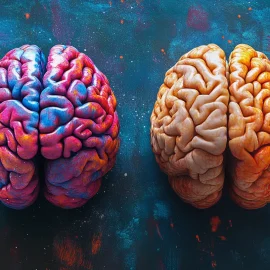
How are emotions created? Why can the same physical sensation feel like anxiety in one situation but excitement in another? What happens when our bodies experience emotions without us knowing why?
Leonard Mlodinow challenges our basic understanding of feelings, showing how our unconscious mind actively constructs emotions. His research on how emotions are created reveals that our interpretation of physical sensations plays a key role in determining whether we feel fear, joy, or something else entirely.
Read more to learn about the invisible processes that create your emotional life.
How Emotions Are Created
Mlodinow explains that emotions aren’t simply triggered by external events, as we often assume. Instead, our unconscious mind constructs them through a complex interplay between physiological responses and contextual information. This insight into how emotions are created builds on a theory first proposed by psychologist William James, who suggested that we first experience bodily changes (such as increased heart rate), and then our interpretation of those changes creates the emotional experience (such as fear or joy).
The reconstructive nature of emotions can lead to what scientists call “emotional illusions”: situations where we misinterpret our physiological state based on the context around us.
For example, imagine your heart is racing from climbing stairs when you encounter an angry colleague. Your unconscious mind might mistakenly attribute your elevated heart rate to the social interaction, intensifying your emotional response to the colleague’s anger. This phenomenon was demonstrated in a classic study: When participants were given adrenaline (which increases heart rate and arousal) without knowing it, they interpreted their physiological arousal according to social cues in their environment—feeling either happiness or anger depending on how others around them were behaving.
Understanding that emotions are reconstructive processes shaped by unconscious interpretation helps explain why our emotional responses can sometimes seem disproportionate or disconnected from the situation at hand. It also suggests why the same physiological state (such as the butterflies in your stomach) might be interpreted as anxiety before a public speech but as excitement before a first date—your unconscious mind uses context to determine which emotion you experience.
| The Construction of Emotion (Severance Season 1 Spoilers Ahead!) Apple TV’s Severance offers a fascinating thought experiment that helps illustrate Mlodinow’s insights about how emotions are created. In the show, office workers have their memories surgically divided so their work selves can’t remember their personal lives and vice versa. When they arrive for work, their work self becomes conscious. When they leave, their outside self takes over, with no memory of the work day. This creates some moments that demonstrate what happens when these two separate spheres of influence on the characters’ emotions become disconnected. Consider Mark, whose work self often arrives at the office with red eyes from crying. Without access to the context—that his outside self is grieving his wife’s death—his work self can only experience the lingering physical sensations of sadness without understanding why. But his friend and ex-colleague Petey observes, “You carry the hurt with you. You feel it down there too. You just don’t know what it is.” This illustrates how our bodies can register emotional experiences even when our conscious minds lack the context to make sense of them. Even more dramatically, when Helly’s work self attempts suicide in the elevator, she is rescued but loses consciousness. When her work self regains awareness days later, she’s physically safe. But her body immediately returns to its traumatized state—gasping for air, heart racing, throat constricting. Her unconscious mind reconstructs the emotional experience of panic by combining her memory of these intense physical sensations with her conscious realization of what happened. These scenarios illustrate Mlodinow’s point that emotions aren’t simply triggered by current events or bodily states alone. Instead, they emerge from how our unconscious mind integrates physical sensations with meaning, even when that meaning comes from remembered trauma rather than present danger. Our unconscious mind is constantly performing this interpretive work, though we’re rarely aware of it happening. |






